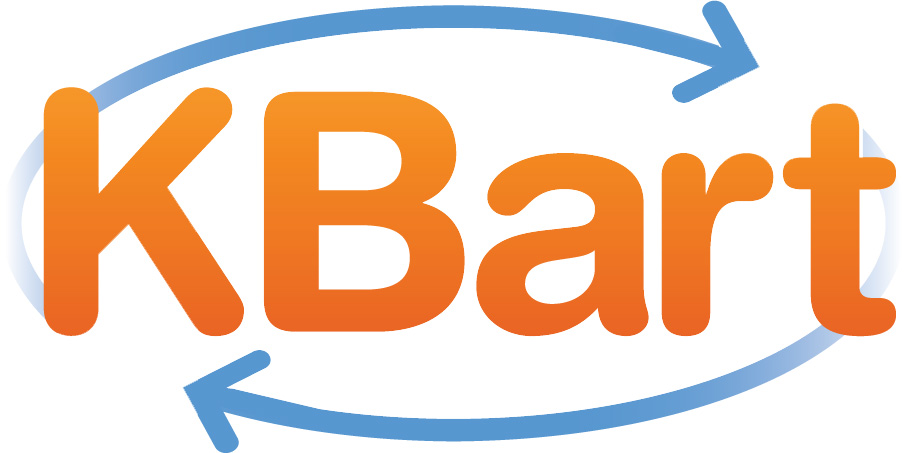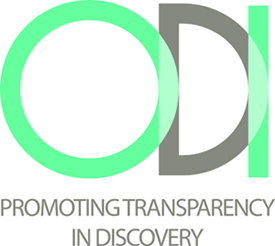Working Group Connection, September 2021: projects via Information Discovery & Interchange Topic Committee
Co-chairs of the IDI topic committee are: Peter Murray (Index Data) and Christine Stohn (Ex Libris).
Access & License Indicators Revision
Co-chairs: Dan O'Brien (American Chemical Society), Esther Heuver (Mendeley/Elsevier)
Working Group Web Page
Work Item Proposal Approved by NISO Voting Members
The Access License and Indicators (ALI) Recommended Practice was first published by NISO in 2015 with the goal to standardize and communicate bibliographic metadata that describe the access rights status of journal articles and their license details. The specification has since gained adoption and use via the ANSI/NISO JATS vocabulary and the Crossref metadata schema.
This working group kicked into action in the last quarter of 2020. Its remit is to add metadata and indicators that would allow metadata users, such as content platforms, to filter or target subsets of license information. This filtering or sub-setting enables applications to determine whether their users can share a specific journal article version–or elements thereof–under specific contexts (e.g., sharing in researcher collaboration groups or on public profiles) using ALI data embedded in a PDF. Following a public comment period which ended in mid-September, NISO is finalizing the Recommended Practice for approval by the Working Group and IDI Topic Committee before publication.
Flexible API STandard for E-content NISO (FASTEN)
Co-chairs: Josh Weisman (Ex Libris), Christopher Carvey (Queens Library)
FASTEN Working Group Web Page
The FASTEN Working Group's NISO Recommended Practice is intended to modernize library-vendor technical interoperability using RESTful Web service APIs and standard mobile application intent calls and solve the problem of multiple vendor methods for integration with discovery platforms, OPACs, patron accounts, etc. Currently, each individual implementation provides a different patron experience which makes it difficult for new users to adopt e-content, and for libraries to support all the variances. The Working Group relied on the Queens Library API Requirements for its initial discussion points and liaised with the BIC LCF to ensure communication in development.
The tasks undertaken by the Working Group included analysis of user and developer "pain points" and examination of existing library-vendor communication toolsets for potential overlap. The group output includes a foundation API set that the library industry can build on to fulfill an array of user and library needs related to authentication, finding and using various types of content and other functional considerations. Implementation of the recommendations should ultimately result in users experiencing quicker response times, more flexible item discovery and delivery options, improved information on resource availability, and seamless integration of electronic and physical resources.
The Working Group is finalizing the finer points of responses to the public comments and expects to make the final document available for topic committee review and NISO publication in late 2021.
Knowledge Bases And Related Tools (KBART) Standing Committee

Co-chairs: Noah Levin (Independent), Andrée Rathemacher (University of Rhode Island)
Contact KBART Chairs for endorsement approval
KBART Web Pages
Knowledge Bases and Related Tools (KBART) Recommended Practice (NISO RP-9-2014)
KBART is a NISO Recommended Practice that facilitates the transfer of holdings metadata from content providers to knowledge base suppliers and libraries. Knowledge bases are widely used to support library link resolvers and electronic resource management systems. The first iteration of the KBART Recommended Practice, which focused on journal holdings, was published in 2010; a 2014 "Phase II" revision extended support to metadata for e-books, conference proceedings, consortial subscriptions and some open access publications. Starting in early 2020 the KBART Standing Committee has been hard at work on research and actions around elements of its Phase III work with subgroups addressing areas of work such as clarifying the recommendations, revamping the mission statement, determining new fields, and creating a new file guide. The endorsement process continues as approved providers are added to the KBART Registry, although a new validator application under development may help speed this process further.
Noah Levin provided an update on KBART work at the NISO ALA Update event in June.
To follow the group's activities, subscribe to the KBART interest mailing list.
Enhancing KBART for Automated Exchange of Title Lists and Library Holdings
Co-chairs: Stephanie Doellinger (OCLC), Oliver Pesch (EBSCO Information Services)
KBART Automation Recommended Practice (NISO RP-26-2019)
KBART Automation Working Group Web Page
The KBART Automation Working Group’s output, the KBART Automation Recommended Practice (NISO RP-26-2019) was published in June 2019. This work extends the KBART Phase 2 Recommended Practice to provide technical instructions to facilitate the automatic transfer and retrieval of holdings data between content providers and institutional knowledge bases with the goal of automatically and regularly updating institutional activations and settings via an API. Included in the Recommended Practice are descriptions of data elements and file formats; options a content provider must provide to enable customers to access its holdings reports; expected API support that enables automated retrieval of reports; suggested license language and a discussion of data confidentiality; and description of additional elements and attribute values that can be included in the reports.
NCIP (NISO Circulation Interchange Protocol) Standing Committee
Chair: Mike Dicus (Ex Libris)
NCIP Web Pages
NCIP Standing Committee
ANSI/NISO Z39.83-1-2012 (version 2.02), NISO Circulation Interchange - Part 1: Protocol (NCIP)
ANSI/NISO Z39.83-2-2012 (version 2.02), NISO Circulation Interchange Protocol (NCIP) Part 2: Implementation Profile 1
The NCIP Standing Committee operates via Continuous Maintenance procedures to manage the latest NCIP standard, version 2.02, which was published in 2012. The committee holds periodic conference calls to review status of implementations and discuss other general business, such as additions to the NCIP website and implementor questions. The Standing Committee is also responsible for reviewing any ongoing updates to the NCIP protocol per the Standing Committee's continuous maintenance procedure. Input from the public is welcome.
Open Discovery Initiative Standing Committee

Co-chairs: Rachel Kessler (ProQuest), Laura Morse (Harvard University)
ODI Web Pages
ODI Recommended Practice (NISO RP-19-2020)
The newest version of the Open Discovery Initiative Recommended Practice was approved by NISO and published in June 2020. The updated ODI Recommended Practice provides a more detailed treatment of Abstracting and Indexing (A&I) content products, and supports better metadata sharing (including information about open access material) and record display, as well as improved tracking of usage statistics and authentication mechanisms. It also includes advice on systems, training, and communication for libraries that configure and upgrade their discovery systems. ODI's intent is to unify the community by encouraging dialogue among stakeholders and by increasing order within the industry by standardizing practices.
The ODI Standing Committee is now concentrating on education and promotion, particularly around ensuring awareness of new conformance statements to be prepared by all stakeholders (content providers, discovery providers, and libraries).
The ODI Standing Committee posts periodic updates on its work to the ODI observer mailing list; any interested observer may join this list. It is also possible to follow @NISO_ODI on Twitter. Julie Zhu and Teresa Hazen spoke about ODI at the NASIG 2021 conference, and Bobbi Patham presented on ODI at the NISO ALA Update event in June. Laura Morse plans to present at the Charleston Conference in November.
Notably, members of the Standing Committee created a NISO webinar in July on conformance statements for libraries.
ResourceSync Working Group

Co-chairs: Todd Carpenter (NISO), Herbert Van de Sompel (Data Archiving and Networked Services (DANS))
ResourceSync Web Page
ANSI/NISO Z39.99-2017, ResourceSync Framework Specification
ResourceSync, a specification which describes a synchronization framework for the web consisting of various capabilities that allow third party systems to remain synchronized with a server's evolving resources, was first published in 2014 and updated more recently in 2017 as ANSI/NISO Z39.99-2017. The problem that ResourceSync was designed to solve spans the areas of search, discovery, deposit, metadata harvesting, and transfer; there is a need to keep collections of resources in sync so that additions, updates, and deletions of one are reflected in the other. The ResourceSync standard was written in such a way that individual capabilities could be combined to meet local requirements. A server may also describe synchronization capabilities that it supports and means through which third party systems may discover this support. The core functionality of the specification is intended to represent a functional replacement of OAI-PMH. (Other features, such as change notification, framework notification, and archive capabilities are published through separate documents, not currently part of the material part of NISO/ANSI standardization.)
ResourceSync is due for its 5-year review in early 2022 and work is starting now to pull this activity together.
A quick overview of ResourceSync, via YouTube, is available at http://youtu.be/ASQ4jMYytsA.
New Project: Controlled Digital Lending
Work Item Approved by NISO Voting Members
The Andrew W. Mellon Foundation awarded NISO a grant of $125,000 to support the development of a consensus framework for implementing controlled digital lending (CDL) of book content by libraries. Libraries exist to serve their communities, to distribute information and knowledge of all kinds to users of many types, abilities, and resources; circulation of content in all formats is a core feature of what libraries exist to do, and they have been doing so legally for centuries. CDL is an emerging “lend like print” approach, which enables libraries to loan digital versions of their print books while using technical controls to ensure a consistent “owned-to-loaned” ratio. This allows a library to lend the exact number of copies of a specific title it owns—regardless of format—with controls to prevent users from redistributing or copying the digitized version. The need for standards and best practices related to CDL was one of the three top ideas identified during the NISO Plus Conference that took place in February of this year.
The Working Group’s scope will include refining existing models that describe the similarities and differences between CDL and traditional circulation and ILL; developing use cases for CDL that take into account all libraries who may adopt it; identifying gaps in the understanding of CDL applications; developing model processes for library staff; describing systems interoperability requirements; and identifying changes needed to existing library protocols and standards.
For more information or to volunteer for the working group, contact Nettie Lagace.
New Project: Communication of Retractions, Removals, and Expressions of Concern (CORREC)
Work Item Approved by NISO Voting Members
Retracted research is published work that is withdrawn, removed, or otherwise invalidated from the scientific and scholarly record. Although relatively rare, retracted research—including unsupported or fabricated data, fundamental errors, and unreproducible results—can be inadvertently propagated within the digital scholarly record through citations. The CORREC Recommended Practice is intended to help address this problem, by clearly identifying parties involved in the retraction process, along with their responsibilities, actions, notifications, and the metadata necessary to communicate retracted research.
CORREC is an output of both the recent Sloan Foundation-funded project, Reducing the Inadvertent Spread of Retracted Science (RISRS) and the 2021 NISO Plus conference, where this topic was one of three highlighted by attendees as of highest importance. CORREC will be consistent with existing guidelines, such as those published by the Council on Publishing Ethics (COPE) and the International Committee of Medical Journal Editors (ICMJE) and the Council of Science Editors (CSE).
A NISO Working Group is now forming to create the Recommended Practice; for more information or to volunteer for the working group, contact Nettie Lagace, NISO Associate Executive Director.
Recent activity of Access & License Indicators; FASTEN; KBART; NCIP; ODI and ResourceSync and announcement of new projects CDL and CORREC.